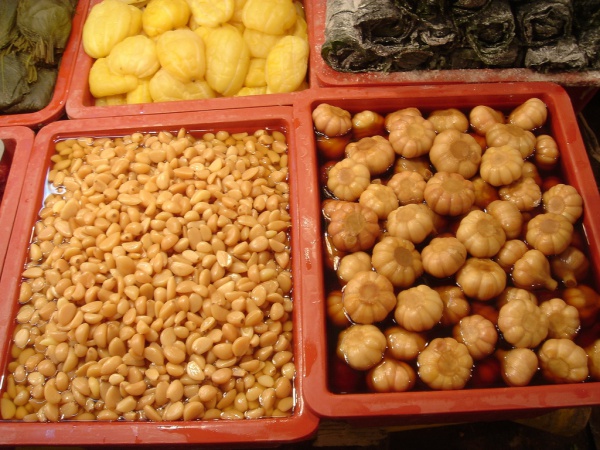Facts About Jangajji
Jangajji, or pickled vegetables, is a revered type of banchan (side dish) in Korean cuisine. Unlike kimchi, which undergoes fermentation, jangajji involves preserving vegetables through pickling without fermentation. These vegetables are typically soaked in soy sauce, soybean paste, or chili paste, allowing them to be preserved for extended periods, making them an essential part of the diet during Korea's harsh winters. Often, a drizzle of sesame oil is added to complete the dish.
The term "Jangajji" has its origins in Middle Korean, combining words related to soy sauce or soybean paste and kimchi.
The ingredients for jangajji vary based on regional and seasonal availability. Common choices include green garlic, garlic scapes, radish, cucumber, chili pepper leaves, chamoe (Korean melon), perilla leaves, and deodeok (a type of root). To minimize excess moisture, the vegetables are often slightly dried or salted before pickling in soy sauce, soybean paste, chili paste, brine, or diluted vinegar. When ready to serve, jangajji is typically cut into pieces and seasoned with sesame oil, sugar, and toasted sesame seeds.
There are numerous varieties of jangajji, each highlighting different vegetables. Examples include pickled peaches, garlic chives, Korean melon, chopi fruits, balloon flower roots, eggplants, perilla leaves, garlic scapes, butterbur leaves, Korean radish, dried radish, cucumber, scallions, green chili peppers, green garlic, ginger, prickly ash fruits, agar jelly, and young summer radish.

 North Korea
North Korea